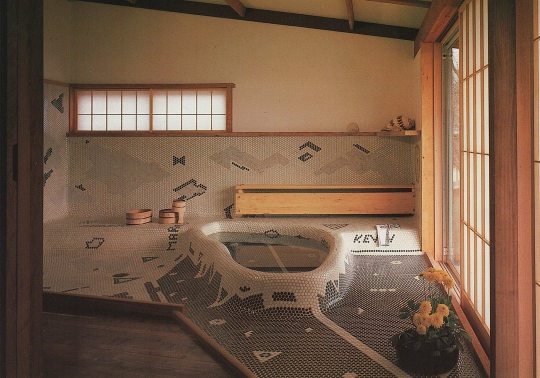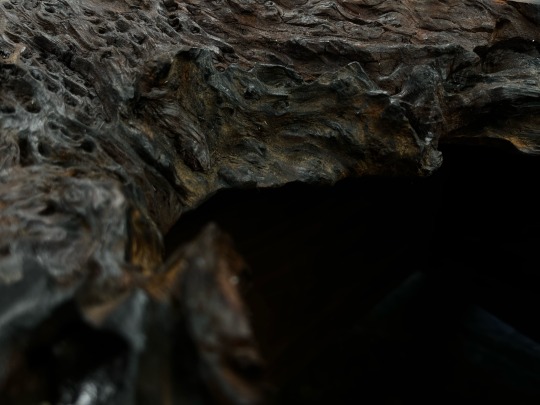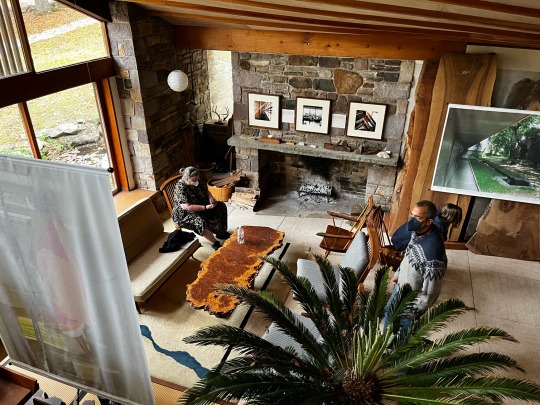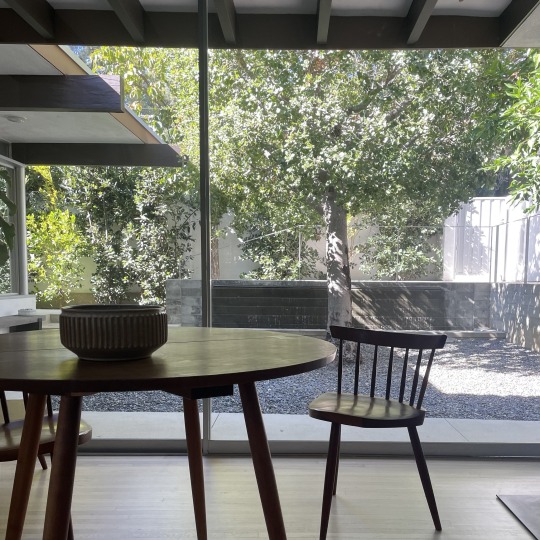#george nakashima
Text
George Nakashima
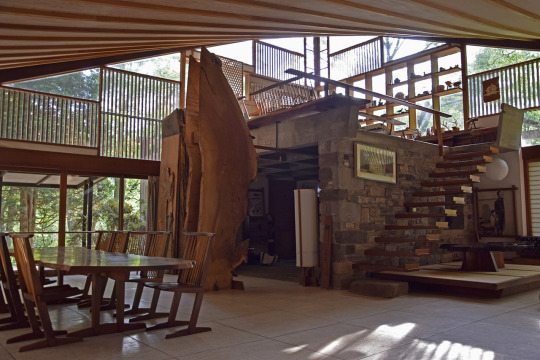
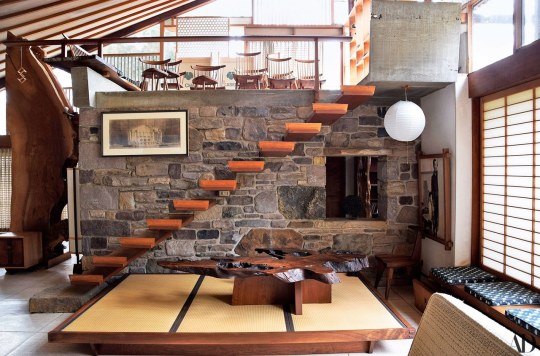



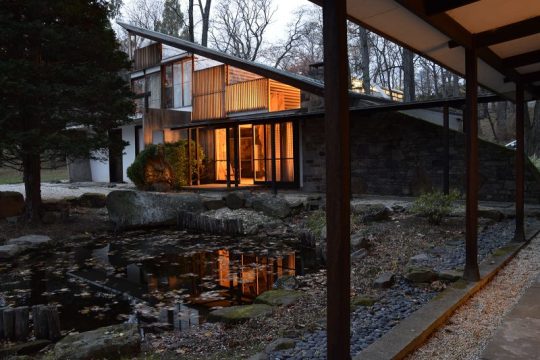
George Nakashima’s Woodworker’s Retreat featured at the University of Pennsylvania

The Nakashima Woodworker’s Retreat “Arts Building” was given to the Nakashima Foundation for Peace in 2001 by George’s widow Marion so that the Foundation would have a permanent home. It features a soaring plywood hyperbolic paraboloid roof cantilevered from stone buttresses over two glass walls, built around a small pond and facing a series of small rooms known as the “Cloister,” harking back to the monastic tradition which so inspired Nakashima. It is used for concerts and events for peace, and houses prototype furniture and archival material, some of which will be turned over to the Michener Museum for research, reference and preservation.
National Historic Landmark nomination for the Nakashima complex
George Nakashima’s Vision
“A while back there appeared a great bole of a tree, a Walnut. It was about five feet in diameter (1.5M) at the small end, about seven (2.1M) at the flare, and twelve (3.6M) long, with extraordinary characteristics. In a small but firm voice the bole asked to be realized; two adjoining slabs opened to make an extraordinary table, roughly twelve feet (3.6M) long by the same dimension wide, weighing almost 1 ton. Gradually a few people became interested in the project and suggested we make six Altars—one for each Continent. It will be a symbol, a token of man’s aspirations for a creative and beautiful peace, free of political overtones; an expression of love for his fellow man. We have become so basically disoriented with our blind faith in science and technology without spirituality, it brought us to our pit of madness.
A symbol is needed—something tangible, like the toe of St. Peter’s statue in the Vatican. This symbol might be the object of a transcontinental or trans-world Peace March. At the end of this pilgrimage, a celebration: A rose or lotus placed on it; songs sung, each in his own tongue; Zen chants so strong; possibly the Day of Existence, a chant to music—spheric in line, spiritual and sad—composed by my ‘brother’ Ivan Wyschnegradsky; Sadhu friends from South India congregating; and monks and others from all over the world who are interested in a higher and deeper consciousness. There is little chance that peace can be achieved politically. There is, at best, a balance of terror; a balance of egos; a balance of demands. Enthusiastic contagion would be useful, as peace the world over is uppermost in our consciousness. It must be a joyous peace, not a fear or absence of war. It is a question of surrender. A surrender to the Divine Consciousness to end in a most beautiful aura of love.”
George Nakashima
October 1, 1984
A Black Walnut Dream: George Nakashima's "Altars of Peace"

The name of George Nakashima is as famous for its contributions to design philosophy as it is for its artistry. As a woodworker, furniture maker, designer, and architect, Nakashima has enough titles to cement his place as the father of the American Craft Movement. But around the world, a separate legacy follows the renowned Japanese-American craftsman: his interest in world peace and humanitarianism through design. Here we explore a project that was particularly close to his heart.



George Nakashima admiring the finished Altar in the Arts Building on the Nakashima compound before sending it to the Cathedral of St. John the Divine, in New York.
#George Nakashima#nakashima#artists#woodworking#carpentry#altars of peace#photography#philosophy#new york#St. John the Divine#University of Pennsylvania
198 notes
·
View notes
Text
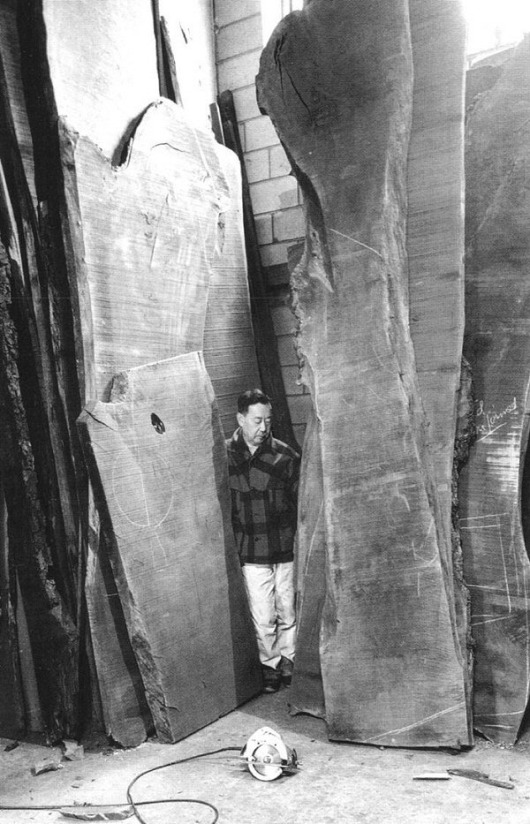
George Nakashima and Boards, New Hope, Pennsylvania, Photo by John Loengard, 1969
62 notes
·
View notes
Text

Slab I Coffee Table | George Nakashima
22 notes
·
View notes
Text
In Japanese kodama, the spirit of a tree, refers to a feeling of special kinship with the heart of a tree. It is our deepest respect for the tree… that we may offer the tree a second life.
George Nakashima
49 notes
·
View notes
Photo

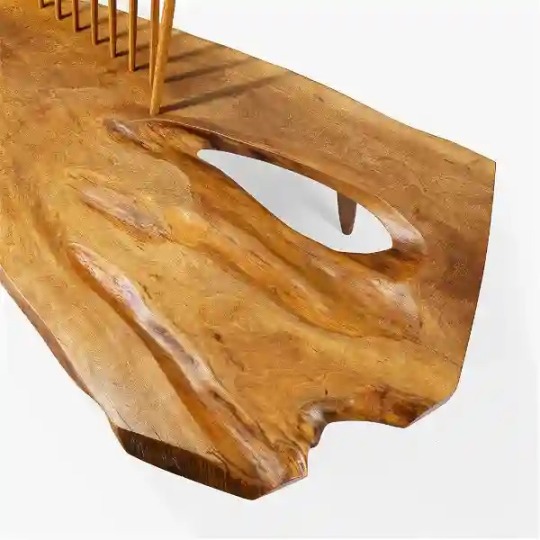

George Nakashima, “Conoid” bench, New Hope, Pennsylvania, 1968,
English walnut, American black walnut, hickory,
H: 31, L: 97 1/2, W: 36 in.
Courtesy: Freeman's
#art#design#furniture#bench#george nakashima#conoid#new hope#1968#organic#sculpture#millwork#woodwork#sustainability#walnut#black walnut#hickory#freeman's#mid century modern#mid century
73 notes
·
View notes
Text
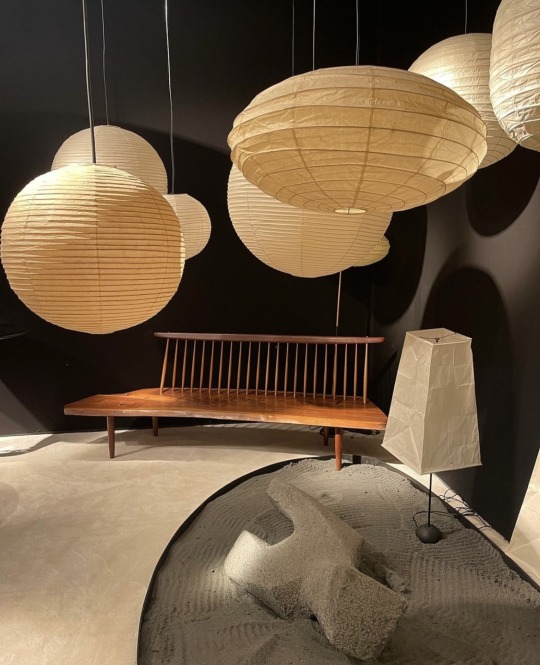
#light#photography#design#tumblr pics#art#tumblr#aesthetic#isamu noguchi#lamp#george nakashima#chair#sofa#gallery#museum#filter#dark#uploads
67 notes
·
View notes
Photo
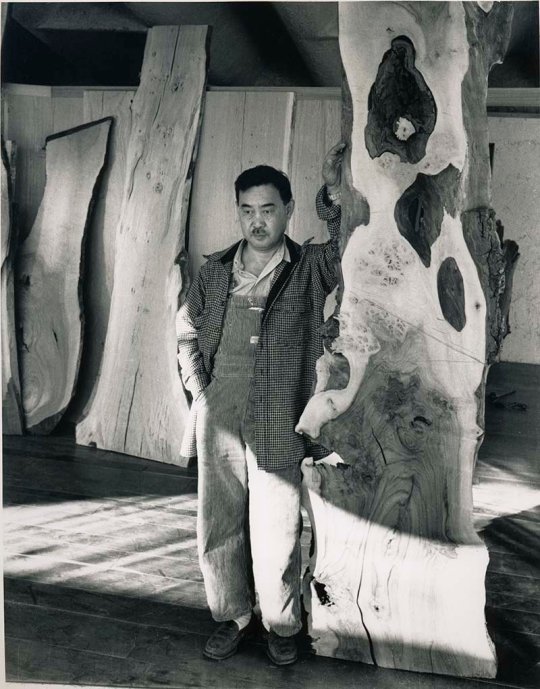
Designer/Maker George Nakashima photographed in his workshop circa 1960.
16 notes
·
View notes
Text
George Nakashima
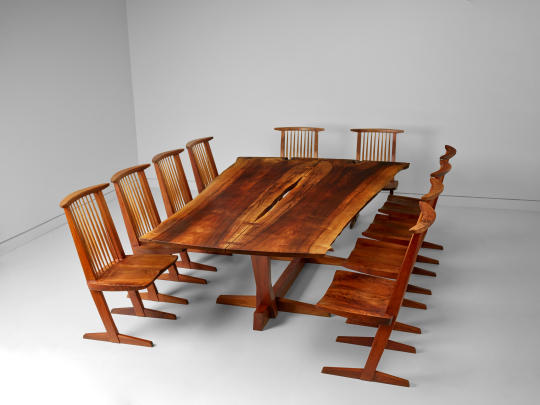
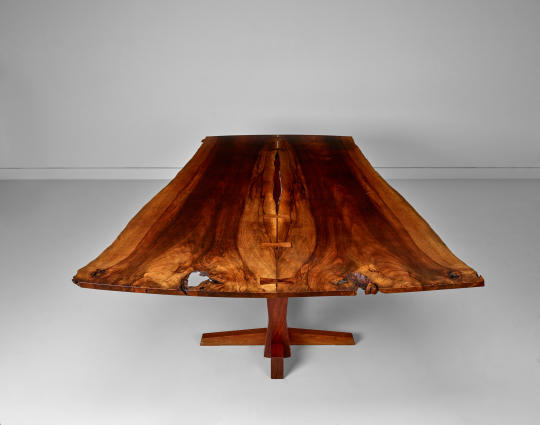





George Nakashima - Conoid Dining Table - 1969
Two Persian walnut boards joined by five butterfly joints with open fissures and two free edges, American black walnut signed 'Garrett' to the underside - height 28 2/3in; length 96in; width 62in
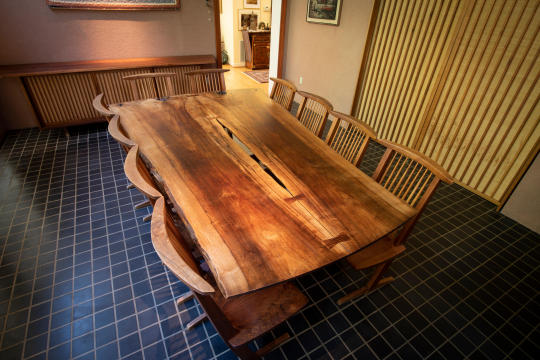

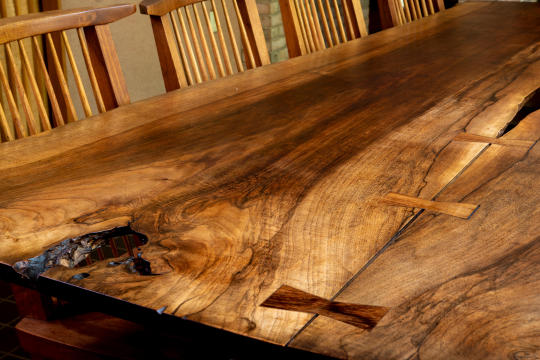
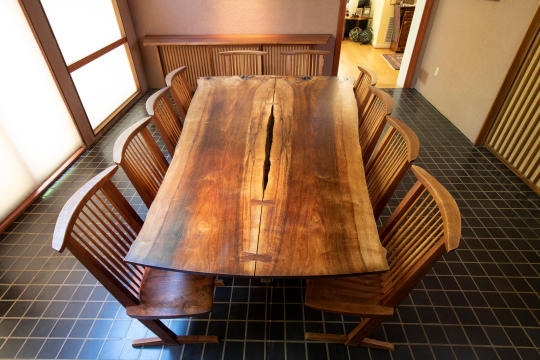


George Nakashima - set of ten conoid dining chairs, circa 1990 -walnut, with single board seat. - Each signed George Nakashima, May 2, 1990. - height 35½in; width 19½in; depth 19½in
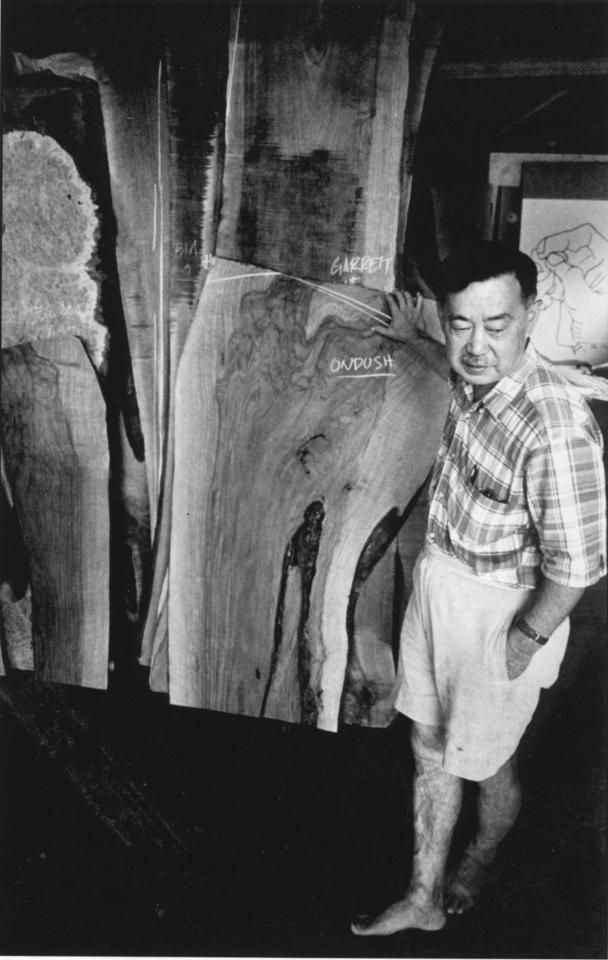
George Nakashima (1905-1990)
#furnishings#furniture#woodworking#wood#walnut#George Nakashima#nakashima#table#chairs#conoid#artists#art#living well is the best revenge
6 notes
·
View notes
Photo

George Nakashima’s Sanso Villa in Kyoto
13 notes
·
View notes
Photo

Double Chest of Drawers | George Nakashima
11 notes
·
View notes


